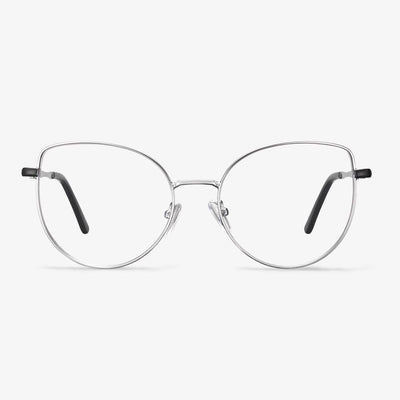Optometry for prescription glasses
The key prerequisite for proper glasses is accurate optometry. In foreign countries, professional optometrists are generally required to be qualified to issue prescriptions for optometry. However, this is not very standardized in China. Many optometrists have only been trained for a short period of time and do not have the basic knowledge of ophthalmology. For some complex situations, they may not give a proper prescription for glasses. Therefore, optometry should choose a qualified institution. If you are adolescents, people with high myopia, people with anisometropia, etc., you may need to dilate your pupils for optometry. It is best to go to the optometry center of the hospital for optometry.
Contact Lens Material - Hydrogels
The raw material of the hydrogel is called HEMA. HEMA is hydrophilic and has a water content of 38% by itself. By cross-linking with other polymers, the water content can be up to 80%. The world's first soft cloaking material (OttoWichterle, 1961) was made from HEMA, called PHEMA. Nowadays, most conventional hydrogels are made up of the copolymer of PHEMA and other monomers.
RIVBOS Polarized Sports Sunglasses for Driving
TAC Polarizing Lenses - RIVBOS lenses are made from cellulose triacetate (TAC) material. TAC has quality optical properties that prevent the shrinkage of PVA polarized light film and has high strength surface scratch resistance. They help restore the original color, eliminate reflected and scattered light, and provide perfect eye protection. Rivbos frames are made from durable TR90 material. These polarized sunglasses feature flexible, stress-resistant frames that are able to withstand pressure without breaking. Whether it's sports or casual, you can show off your unique style.
Clear non-prescription sunglasses are a trend.
Clear glasses will not appear old, as long as the choice of their own frame is good-looking, although it is often said that a round face is suitable for angular frames, and a three-dimensional face is more suitable for rounded frames, but the collocation of face shape and frame can not be generalized. A transparent picture frame gives a person a feeling of intellectual, restoring ancient ways of literature and art model. There are a lot of people who use it to reflect their modeling. It seems that there is a pure sense of feeling. And people who use it do not lose the taste of literature and art, and there is a unique personality. Half of the transparent glasses are made of TR material and plate, which is light and comfortable to wear and have many styles.
How to choose frames?
Of course, the best way is to try it on many times. The visual effect is more direct and reliable than trying on. Spend more time and you can find your own style suitable for you.
In addition, where comfort and aesthetics permit, choose the size as large as possible so that the view will be larger. However, there are some optometric parameters that limit the selection of frames. For example, if the pupil distance is very small, choose a size that is too large is not suitable. Try not to choose the product with spray paint on the surface, because durable time is shorter.
You should pay special attention to that TR, plastic steel, stainless steel, wood, β titanium glasses temple may not be adjusted. When trying on, it should be noted that the weight of the lens has not been added to the trying frame, to avoid the problem of discomfort (such as an easy slip of the frame) found after the preparation.
Cheap frames can cause skin irritation.
Some cheap frames may look like more expensive frames. But more often than not, they are made of low-level materials that can cause skin irritation over time. Cheap plastic frames can be bleached by ultraviolet light, leaving the surface rough after months of wear and tear. Cheap metal frames often contain nickel alloy, which can cause skin irritation.
Early glasses
The first inventor of wearable glasses is not known. However, it was the Romans who first discovered the use of glass to enhance their ability to see small words, creating small magnifying glasses with spheres. The first known wearable glasses in history appeared in Italy in the 13th century. They were used mainly by monks, and became popular little by little during the Renaissance, as the technology improved. As their popularity grew, the Italian glasses spread throughout Europe, mostly within reach of the wealthy. Because learning was a prized attribute during the Renaissance, glasses were a status symbol of wisdom and prosperity. With the temple extending above the ear, the glasses are no longer required by hand.











































